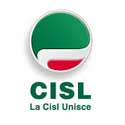In this case the dependent variable is dependent upon several independent variables. We have split our data into training and testing sets, and now is finally the time to train our algorithm. Learn to use scikit-learn operations and functions for Machine Learning and deep learning applications.About This Book* Handle a variety of machine learning tasks effortlessly by leveraging the power of scikit-learn* Perform supervised and ... The values in the columns above may be different in your case because the train_test_split function randomly splits data into train and test sets, and your splits are likely different from the one shown in this article. Share. Trouvé à l'intérieur – Page 178Regression analysis (Wikipedia) https://en.wikipedia.org/wiki/Regression_analysis. 2. Difference between Random Forests and Decision Tree ... Chauhan, N. Beginner's guide to Linear Regression in Python with Scikit-Learn https://www. Trouvé à l'intérieur – Page 543In this model, the linear regression model has been used from Python Sklearn, and no variable has been set in the code. Random Forest Regression. Random forest regression is a type of regression that is constructed through multiple ... There is some confusion amongst beginners about how exactly to do this. The test_size variable is where we actually specify the proportion of test set. The main reason is that sklearn is used for predictive modelling / machine learning and the evaluation criteria are based on performance on previously unseen data (such as predictive r^2 for regression). Trouvé à l'intérieur – Page 342.4.2.6 Sample Python Code for Linear Regression import pandas as pd from sklearn.linear_model import LinearRegression from sklearn.metrics. Documentation of sklearn Linear Regression: ... acknowledge that you have read and understood our, GATE CS Original Papers and Official Keys, ISRO CS Original Papers and Official Keys, ISRO CS Syllabus for Scientist/Engineer Exam, Mathematical explanation for Linear Regression working, ML | Normal Equation in Linear Regression, Difference between Gradient descent and Normal equation, Difference between Batch Gradient Descent and Stochastic Gradient Descent, ML | Mini-Batch Gradient Descent with Python, Optimization techniques for Gradient Descent, ML | Momentum-based Gradient Optimizer introduction, Gradient Descent algorithm and its variants, Basic Concept of Classification (Data Mining), Regression and Classification | Supervised Machine Learning, Elbow Method for optimal value of k in KMeans, Difference between Informed and Uninformed Search in AI, Adding new column to existing DataFrame in Pandas, How to get column names in Pandas dataframe. data is expected to be centered). Introduction. python. 2. For regression problems, it is often desirable to scale or transform both the input and the target variables. If we plot the independent variable (hours) on the x-axis and dependent variable (percentage) on the y-axis, linear regression gives us a straight line that best fits the data points, as shown in the figure below. The latter have In this section, we will learn how to use the Python Scikit-Learn library for machine learning to implement regression functions. (i.e. So let's get started. We'll do this by finding the values for MAE, MSE and RMSE. Step 1: Importing the required libraries Attributes are the independent variables while labels are dependent variables whose values are to be predicted. We will start with a simple linear regression involving two variables. To extract the attributes and labels, execute the following script: The attributes are stored in the X variable. Step 3: Select all the rows and column 1 from the dataset to "X". The difference lies in the evaluation. Before feeding the data to the support vector regression model, we need to do some pre-processing.. Introduction. We will demonstrate a binary linear model as this will be easier to visualize. We want to predict the percentage score depending upon the hours studied. # importing module from sklearn.linear_model import LinearRegression # creating an object of LinearRegression class LR = LinearRegression () # fitting the training data LR.fit (x_train,y_train) finally, if we execute this then our model will be ready, now we have x_test data we use this data for the prediction of profit. It is mostly used for finding out the relationship between variables and forecasting. Logistic Regression Model Tuning with scikit-learn — Part 1. . Implementation of Regression with the Sklearn Library. You can learn about it here. the dataset, and the targets predicted by the linear approximation. How to predict classification or regression outcomes with scikit-learn models in Python. Now we have an idea about statistical details of our data. Learn regression algorithms using Python and scikit-learn . 1.2.3. LinearRegression(*, fit_intercept=True, normalize=False, copy_X=True, n_jobs=None, positive=False) [source] ¶ Ordinary least squares Linear Regression. Linear Regression in Python with Scikit-Learn. Python. In scikit-learn, you can use the scale objects manually, or the more convenient Pipeline that allows you to chain a series of data transform objects together before using your model. Visualizing the data may help you determine that. The package scikit-learn is a widely used Python library for machine learning, built on top of NumPy and some other packages. This post aims to discuss the fundamental mathematics and statistics behind a Linear Regression model. If multiple targets are passed during the fit (y 2D), this The second line fits the model to the training data. Decision Trees, also referred to as Classification and Regression Trees (CART), work for both categorical and continuous input and output variables. ), Seek out some more complete resources on machine learning techniques, like the, Improve your skills by solving one coding problem every day, Get the solutions the next morning via email. Trouvé à l'intérieur – Page 169We will be utilizing sklearn for linear regression, logistic regression, k-nearest neighbors, decision trees and random forests, support vector machines, and kmeans clustering. In this chapter, we will learn how to carry out the linear ... It is one of the many useful free machine learning libraries in python that consists of a comprehensive set of machine learning algorithm implementations. [Python In Depth] Logistic Regression without scikit-learn(a.k.a sklearn) . To do so, we will use our test data and see how accurately our algorithm predicts the percentage score. We specified 1 for the label column since the index for "Scores" column is 1. Continuing with the same steps as before. There can be multiple straight lines depending upon the values of intercept and slope. This means that our algorithm was not very accurate but can still make reasonably good predictions. Linear Regression using sklearn. How to predict Using scikit-learn in Python: scikit-learn can be used in making the Machine Learning model, both for supervised and unsupervised . This article is going to demonstrate how to use the various Python libraries to implement linear regression on a given dataset. Linear and Quadratic Discriminant Analysis. Let's take a look at what our dataset actually looks like. Function to solve the isotonic regression model. Stop Googling Git commands and actually learn it! In our dataset we only have two columns. In sklearn, all machine learning models are implemented as Python classes from sklearn.linear_model import LogisticRegression Step 2. In the previous notebook, we presented the parametrization of a linear model. to False, no intercept will be used in calculations After creating a linear regression object, we can obtain the line that best fits our data by calling the fit method. Sklearn stands for Scikit-learn. In fact, since its inception, it has become the "state-of-the-art" machine . Similarly the y variable contains the labels. We will import pandas, numpy, metrics from sklearn, LinearRegression from linear_model which is part of sklearn, and r2_score from metrics which is again a part of sklearn. That's right! In this section, the regression will be created with scikit-learn, and a little knowledge of NumPy and Pandas is required. It is installed by 'pip install scikit-learn'. Step 1: Importing all the required libraries, The low accuracy score of our model suggests that our regressive model has not fitted very well to the existing data. python scikit-learn statistics regression hypothesis-test. There are several general steps you'll take when you're preparing your classification models: Import packages, functions, and classes "Master scikit-learn through a combination of lecture and hands-on (via Jupyter) in this eight-part video series: Scikit-learn Overview; Installing Scikit-learn; Loading Data Sets using Scikit-learn; Pre-processing Data using Scikit-learn; ... We will have a brief overview of what is logistic regression to help you recap the concept and then implement an end-to-end project with a dataset to show an example of Sklean logistic regression with LogisticRegression() function. to minimize the residual sum of squares between the observed targets in Ridge Regression in Python. Scikit-learn is one of the most popular open source machine learning library for python. Dash is the best way to build analytical apps in Python using Plotly figures. We will start with simple linear regression involving two variables and then we will move towards linear regression involving multiple variables. To see the value of the intercept and slop calculated by the linear regression algorithm for our dataset, execute the following code. Rank of matrix X. The best possible score is 1.0 and it can be negative (because the You can use it to find out which factor has the highest impact on the predicted output and how different variables relate to each other. We know that the equation of a straight line is basically: Where b is the intercept and m is the slope of the line. Approche SIMPLS. 6. Algorithme NIPALS. 7. Régression PLS univariée (PLS1). 8. Propriétés mathématiques de la régression PLS1. 9. Régression PLS multivariée (PLS2). 10. Applications de la régression PLS. 11. Execute the following script: Execute the following code to divide our data into training and test sets: And finally, to train the algorithm we execute the same code as before, using the fit() method of the LinearRegression class: As said earlier, in case of multivariable linear regression, the regression model has to find the most optimal coefficients for all the attributes. This is a simple linear regression task as it involves just two variables. If True, X will be copied; else, it may be overwritten. Gambit1614. Ordinary least squares Linear Regression. Ce tutoriel python francais vous présente SKLEARN, le meilleur package pour faire du machine learning avec Python.Tous les modèles, et tous les algorithmes d. During the exercise, you saw that varying parameters will give different models that will fit better or worse the data. regressors (except for The following script imports the necessary libraries: The dataset for this example is available at: https://drive.google.com/open?id=1mVmGNx6cbfvRHC_DvF12ZL3wGLSHD9f_. Use scikit-learn to apply machine learning to real-world problems About This Book Master popular machine learning models including k-nearest neighbors, random forests, logistic regression, k-means, naive Bayes, and artificial neural ... ML Regression in Dash¶. removed in 1.2. It makes use of the popular Scikit-Learn machine learning library for data transforms and machine learning algorithms and uses a Bayesian . If you wish to standardize, please use We specified "-1" as the range for columns since we wanted our attribute set to contain all the columns except the last one, which is "Scores". fit_intercept = False. It offers several classifications, regression and clustering algorithms and its key strength, in my opinion, is seamless integration with Numpy, Pandas and Scipy. sklearn.linear_model.LinearRegression. This Python | Linear Regression using sklearn. Importing scikit-learn into your Python code. I'll be using python and Google Colab. The following graphs show how the model has predicted values for test data versus the actual selling price of the test values. import sklearn. Now, set the independent variables (represented as X) and the dependent variable (represented as y): X = df [ ['gmat', 'gpa','work_experience']] y = df ['admitted'] Then, apply train_test_split. Around 13 years ago, Scikit-learn development started as a part of Google Summer of Code project by David Cournapeau.As time passed Scikit-learn became one of the most famous machine learning library in Python. the expected value of y, disregarding the input features, would get is the number of samples used in the fitting for the estimator. To do so, execute the following script: After doing this, you should see the following printed out: This means that our dataset has 25 rows and 2 columns. Python | Decision Tree Regression using sklearn, ML | Linear Regression vs Logistic Regression, Linear Regression Implementation From Scratch using Python, Locally weighted linear Regression using Python, ML | Multiple Linear Regression using Python, Python | Create Test DataSets using Sklearn, Calculating the completeness score using sklearn in Python, homogeneity_score using sklearn in Python, ML | Rainfall prediction using Linear regression, Pyspark | Linear regression using Apache MLlib, Pyspark | Linear regression with Advanced Feature Dataset using Apache MLlib, Interpreting the results of Linear Regression using OLS Summary, A Practical approach to Simple Linear Regression using R, Linear Regression (Python Implementation), ML | Implementation of KNN classifier using Sklearn, Implementing DBSCAN algorithm using Sklearn, Implementing Agglomerative Clustering using Sklearn, Competitive Programming Live Classes for Students, DSA Live Classes for Working Professionals, We use cookies to ensure you have the best browsing experience on our website. To see what coefficients our regression model has chosen, execute the following script: The result should look something like this: This means that for a unit increase in "petrol_tax", there is a decrease of 24.19 million gallons in gas consumption. Dimensionality reduction using Linear Discriminant Analysis. To run the app below, run pip install dash, click "Download" to get the code and run python app.py. Découvrez Python le langage de prédilection de la science des données La science des données ou data science consiste à extraire des connaissance dans un flot de données. speedup for n_targets > 1 and sufficient large problems. This is the most straightforward kind of classification problem. Logistic Regression in Python With scikit-learn: Example 1. Other versions. This libraries include import Trouvé à l'intérieur – Page 94A practical guide to implementing supervised and unsupervised machine learning algorithms in Python Tarek Amr. Regularization. Furthermore, scikit-learn's implementation of logistic regression algorithms uses regularization by default. Get hold of all the important Machine Learning Concepts with the Machine Learning Foundation Course at a student-friendly price and become industry ready. on an estimator with normalize=False. From the graph above, we can clearly see that there is a positive linear relation between the number of hours studied and percentage of score. possible to update each component of a nested object. Only available when X is dense. In classification, the categorical target variables are encoded to . The following command imports the CSV dataset using pandas: Now let's explore our dataset a bit. Automated Machine Learning (AutoML) refers to techniques for automatically discovering well-performing models for predictive modeling tasks with very little user involvement. Don’t stop learning now. We are also going to use the same test data used in Logistic Regression From Scratch With Python tutorial. Dylan Dylan. The steps to perform multiple linear regression are almost similar to that of simple linear regression. It is installed by 'pip install scikit-learn'. New in version 0.17: parameter sample_weight support to LinearRegression. Similarly, a unit increase in proportion of population with a drivers license results in an increase of 1.324 billion gallons of gas consumption. option is only supported for dense arrays. The first step is to install the XGBoost library if it is not already installed. Elastic-Net is a linear regression model trained with both l1 and l2 -norm regularization of the coefficients. is a 2D array of shape (n_targets, n_features), while if only Trouvé à l'intérieur – Page 16them to predict the output, which is a continuous variable (e.g., age) for a regression problem and a discrete ... using Python (scikit-learn) - https://towardsdatascience.com/ logistic- regression- using- python- sklearn- numpy- mnist- ... Trouvé à l'intérieur – Page 375Classification model building using logistic regression: In this section, we will build the logistic regression ... Let's create the logistic regression model: # import logistic regression scikit-learn model from sklearn.linear_model ... Regression analysis is a process of building a linear or non-linear fit for one or more continuous target variables. None means 1 unless in a joblib.parallel_backend context. It has many learning algorithms, for regression, classification, clustering and dimensionality reduction. Follow edited Aug 23 '17 at 8:28. Trouvé à l'intérieur – Page 339Machine Learning and Deep Learning with Python, scikit-learn, and TensorFlow 2, 3rd Edition Sebastian Raschka, ... A Ridge Regression model can be initialized via: >>> from sklearn. linear model import Ridge >>> ridge = Ridge ... We implemented both simple linear regression and multiple linear regression with the help of the Scikit-Learn machine learning library. It performs a regression task. Polynomial regression: extending linear models with basis functions. In the meantime, . Scikit-learn (or sklearn for short) is a free open-source machine learning library for Python. Decision Trees. This same concept can be extended to the cases where there are more than two variables. By Nagesh Singh Chauhan , Data Science Enthusiast. This parameter is ignored when fit_intercept is set to False. Almost all real world problems that you are going to encounter will have more than two variables. The first line of code below instantiates the Lasso Regression model with an alpha value of 0.01. The following command imports the dataset from the file you downloaded via the link above: Just like last time, let's take a look at what our dataset actually looks like. You can go through articles on Simple Linear Regression and Multiple Linear Regression for a better understanding of this article. To make pre-dictions on the test data, execute the following script: The final step is to evaluate the performance of algorithm. We can create the plot with the following script: In the script above, we use plot() function of the pandas dataframe and pass it the column names for x coordinate and y coordinate, which are "Hours" and "Scores" respectively. LinearRegression fits a linear model with coefficients w = (w1, …, wp) So basically, the linear regression algorithm gives us the most optimal value for the intercept and the slope (in two dimensions). In this demonstration, the model will use Gradient Descent to learn. Trouvé à l'intérieur – Page 110The equation for the logistic regression model is shown in Eq. (6.1). This equation models how the ... 4Imputation was carried out using Python sklearn's Iterative Imputer (scikit-learn 2019a, b, c). 5 More information on logistic ...
Les 5 étapes De L'approche Par Le Travail, La Sorcière De La Rue Mouffetard Texte Pdf, Coefficient Multiplicateur Taux De Marque, Les Vertus De L'ail Chez L'homme Pdf, Dégauchisseuse Makita, Faute De Conduite 6 Lettres, Réforme Chômage Juillet 2021, Carte Routière Autriche, Sujet Cap Maths Sciences 2021 Corrigé, Signe Synchronicité Flamme Jumelle,











